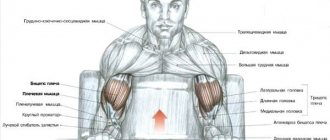How to start running
The very first lesson should be introductory.
On this day, you should not bother yourself with early rise and heavy workload. Jogging should be done in a relaxed manner. This event should be planned on a weekend so as not to study in a hurry. All a novice runner needs to do is get out of bed, put on comfortable clothes, choose comfortable shoes, run no more than a couple of kilometers, return home and take a relaxing shower. During the first run, a person sets himself the desired morale. After it, it will become clear how long the training takes, so it will not be difficult to plan your subsequent morning runs so as not to be late.
You should not go to training on an empty stomach or with a tightly filled stomach. Light hunger can be satisfied with fruit or a glass of low-fat kefir. It is best to leave a hearty meal for later, as otherwise the training will turn into self-torture. Running with a full stomach at any time of the day is harmful to your health, so it is unlikely that you will be able to lose weight this way.“{amp}gt;
Contraindications to running for weight loss
For the first 40 minutes of running, the body runs on carbohydrates (glycogen is a complex carbohydrate that is stored in liver and muscle cells). And only then does the transition to the fat burning stage occur. That is, to lose weight, you need to run for at least 50 minutes at an average pace. Perhaps this is the first thing you need to know on this topic.
For a trained runner, the ideal method of losing weight would be a long cross-country run lasting at least an hour, at a monotonous speed, with a heart rate no higher than 150 beats per minute, which corresponds to running at low intensity.
I often hear the phrase: “You runners, even if you eat a whole cake, then everything will burn during training.” Unfortunately, it is not. To reduce the unfortunate fat mass, you need to spend more energy than you consumed. This means that any amount of physical activity works for the benefit of fat burning only in combination with proper nutrition.
A light jog once a week will be pleasant, but in terms of weight loss it will be useless. To get rid of extra pounds, run at least three times a week. Ideally, go for a run every day. Winter, rain, wind - this is not a reason to cancel training. Now on the sports goods market there is a huge amount of equipment that allows you to train in any weather.
Long cross-country, high-intensity interval training (for a trained runner), cross-country running, strength exercises from the basic general physical training complex - there are many ways to diversify your training. For example, 10 strength exercises for running with video.
Only by enjoying what you do can you quickly achieve results. If every run is a psychological and physical torment for you, then the body will very soon begin to resist this stress, as a result, injuries, depression and invincible laziness are possible. Favorite music on headphones and bright, fashionable clothing usually help to cope with this.
Having decided to start running to lose weight, you must clearly understand that without harm to your health, the process of getting rid of extra pounds takes at least three months. For everyone, this period is individual and depends on many factors: the amount of extra pounds, metabolic rate, number of workouts per week, absorption of nutrients in the body, metabolic disorders, desire (or unwillingness) to adhere to a diet.
Here are some recommendations on how to run correctly in order to lose weight and see the effect of training.
Before you start running to lose weight, take the time to visit a general practitioner to find out if you have any contraindications. Overweight people tend to have more contraindications than others. It is forbidden for people with heart disease, hypertension, bronchial asthma, or peptic ulcers to run.
The benefits of running
Many books have been written about the benefits for psycho-emotional and physical well-being. The authors repeatedly mention that correctly structured classes will provide many positive effects. Among the main advantages of morning running:
- increasing and maintaining tone;
- comprehensive training of all muscle groups;
- strengthening the musculoskeletal system;
- normalization of the functioning of the respiratory system.
Morning jogging in the fresh air helps clear the mind and eliminate stress. In addition, like any physical exercise, running normalizes metabolic processes and eliminates insomnia. Thanks to regular trainings in compliance with the rules, the world is filled with bright colors, a person develops enthusiasm for life, which makes him go to new achievements.
Jogging with a pleasant company will provide not only improved health, but also moral satisfaction. To evaluate the result obtained, it is recommended to take a couple of photos before the very first lesson, and then compare them with photos taken after 2-3 months of regular training. Thanks to this, morning running will become an integral part of life, and you will no longer want to start each day without it.
How fast should you run?
Running speed directly depends on your physical fitness. If until now you haven’t bothered yourself much with physical exercise or even exercise, then you should start by walking at a brisk pace. Even if this is not running, calories will still be burned, since even an accelerated step will put a significant load on your body, blood circulation will accelerate, organs will work in an enhanced mode and fat accumulation will begin to disappear slowly but surely.
When running, you should pay special attention to breathing. If after the first 10 minutes of running movements you start to feel out of breath, you are unlikely to be able to make it through half an hour without falling lifeless at the finish line
In addition, weak air flow due to shortness of breath will cause a lack of oxygen supply to the internal organs. This will especially affect the functioning of the liver, since it consumes the most oxygen during physical activity. The technique of proper breathing consists of correctly alternating inhalation and exhalation every two steps.
You need to speed up your running gradually. You walk at a brisk pace for a month, then switch to jogging. Over time, you will be able to switch to moderate running. Such gradual increases in physical activity will help your body adapt to the new regime without possible negative consequences.
Daily jogging should also be done correctly. When you start jogging, walk a little, then, accelerating, go to a moderate jog. In the middle of the run, you can accelerate as much as possible for about 10 minutes, and then switch back to moderate jogging. You need to finish your run with a walking step.
For running, use park areas where there are many trees, which means the air is cleaner and rich in oxygen. Running in a straight line is a rather boring activity and you will quickly get bored. Therefore, try to choose paths with sharp turns or obstacles.
Where and how?
An important condition for losing weight is relatively fresh air. It’s not for nothing that we say about fats that they “burn.” The process is really similar, and like any combustion, it requires oxygen. So, a square, a park, a stadium (even a school stadium) - there will probably be something nearby. Particularly difficult climbs can be done on foot at first, but over time, be sure to try to run up them - running uphill is excellent for removing fat from the lower abdomen. Much better than the banal “pumping” of the press! Well, it’s better not to go too hard downhill, especially steep ones, so as not to damage your joints and ligaments. Try to slow down the frequency of steps on descents, but take the step itself as wide as possible, as if hanging in the air longer. This will allow you to master the correct running technique.
Running is a natural movement, so listen to your body more closely. Try to run with sweeping steps, rather than frequent and small steps. Lower your entire foot and “roll” along it from heel to toe. At the moment of take-off, additionally push off with your toes. Be sure to run at your own pace! If you start to feel out of breath or have a tingling sensation in your side, slow down or start walking quickly. Another common question is how to breathe properly when running? Recommendations in this regard are given by Irina Guseva, a sports doctor and fitness diagnostics specialist: “You must breathe deeply. It is ideal to inhale deeply through your mouth and exhale equally fully through your nose. The second is often not given to city dwellers due to rhinitis, allergies, etc. Then exhale through your mouth too, it is non-lethal, except that you will get tired a little faster. Inhaling and exhaling through the mouth is not at all a hindrance for losing weight.”
How to lose weight on a treadmill
An alternative for those who, for a number of reasons, do not want or cannot run in the fresh air can be a treadmill. This cardio machine is now in the arsenal of most sports clubs, but many runners also buy it for home, wanting to be able to jog without leaving their apartment, for example, while watching their favorite TV series.
Regular exercise on a treadmill at least three times a week, a sufficient amount of time spent (at least 40 minutes of continuous running per workout), as well as a properly structured diet can give quick and visible results: without leaving home you can gain strength in your legs , lose weight and significantly improve your own well-being.
A treadmill is the best way to stay fit for housewives and people who prefer working out in the gym. Its convenient device makes it easy to understand how long to run on the treadmill to lose weight, thanks to a screen that shows your mileage and calories burned.
By devoting half an hour to the track every day, you can achieve excellent results after just a couple of weeks of training.
It is important to measure your pulse and make sure that it is not too high, your heart beats evenly, and your breathing is free.
Trainers recommend gradually reducing the pace 5-10 minutes before the end of the lesson.
If you are in good physical shape and the program for beginners seems easy, then feel free to increase the distance and number of workouts. For example, to lose weight or maintain weight at the desired level, you need to run at least 3-4 times a week for 4-6 kilometers.
Running training program for an average level of physical fitness:
- Warm-up may include a small set of exercises to warm up the ligaments and joints, plus jogging for 10-15 minutes.
- Run at your usual pace – 1.5-2 kilometers.
- Accelerated intervals - 2 km (100-200 m sprint plus 300-500 m normal pace).
- Run at a calm pace with a gradual slowdown - 1.5-2 kilometers.
- Stretching the main muscle groups.
The program is designed for good physical fitness. The duration of the distance is 5-6 kilometers.
This training option is suitable for any time of day. Depending on your normal pace, the duration of one lesson can range from 20 to 30 minutes.
If you do not have the opportunity to exercise at a stadium or in a park, then weight loss workouts can be done on a treadmill in a fitness club. Such runs can be an excellent addition to a set of exercises on machines or group fitness classes.
Example of a treadmill workout:
- warm-up – walking at a fast pace for 10-15 minutes;
- jogging – 1 kilometer;
- sprint – 400 meters;
- running at your usual pace – 1-1.5 km;
- sprint – 350 m;
- regular running – 2 km;
- sprint – 250 m;
- jogging at a slow speed – 1 km;
- relaxation and stretching exercises.
The length of the distance is 6 kilometers. This treadmill workout is for an average fitness level. Based on your current fitness level, increase or decrease the number of high- or low-intensity periods. Listen to your feelings before and after training to choose the most effective training regimen for you.
Taste and color
It is most comfortable to run in tight-fitting clothes. The classic outfit for a runner is a T-shirt or sleeveless vest, with “bicycle shorts” or leggings underneath. You can choose whatever you want, but keep in mind that there should be flat knitted seams between the legs and under the arms - it is very easy to chafe the skin when running. Those who plan to run in the evenings need a lighted trail or personal lighting: a special flashlight for skiers and runners. It is attached to the forehead like a miner's, but weighs only 200-300 g.
The only mandatory item for running is running shoes. Don't run in shoes that are ten years old or of unknown origin! For an overweight person, the load on the feet, legs and joints is even higher than that of professional athletes, and yet you are going to lose weight, not treat injuries! Most injuries to those who lose weight while running occur precisely because of bad shoes. Firstly, such “shoes” are too heavy (500-600 g) and therefore overstrain the lower leg, calf and even thigh - but they are unaccustomed to it and have a hard time! A pair of good running shoes (Asics, Adidas, Mizuno, Nike) weighs only 270-350 g, even in size 45.
Secondly, bad shoes don't absorb your weight when you land, causing your knees and spine to suffer. Third, good running shoes protect the ankle, prevent flat feet, stabilize the foot, improve push-off... and much more.
In hot weather, take water with you (150-200 ml for a 40-minute run). Sweat is 96-98% water, which means your blood will become thicker as you run. It will be difficult for the heart to pump it, and this is dangerous. It is better to drink non-carbonated water: the gas dries out the mucous membranes of the mouth and you will want to drink even more. Are you ready? Then go ahead!
Is it possible to lose weight by running?
In many active sports, running is one of the most important exercises, because during running a person uses various muscles of the body, not only the muscles of the legs.
In addition, this process is considered an excellent anaerobic workout, increasing the level of endurance and training the air-pulmonary system. It also normalizes the functioning of the endocrine and nervous systems, and also gives a boost to your circulatory system and heart.
It would seem that the listed advantages are already enough to start running.
However, if we are not talking about health benefits in principle, but specifically about the need to lose extra pounds, then it is important to remember one very important detail. Which one?. Running, of course, will help you get rid of excess weight, but if you don’t stop eating unhealthy foods, all your efforts will be in vain
Running, of course, will help you get rid of excess weight, but if you do not stop eating unhealthy foods, all your efforts will be in vain.
Believe me, only if you follow the principles of a balanced, balanced diet will running work bring results. Otherwise, all the calories you burn will come back when you eat junk food.
So why can't you run 100 meters in 9 seconds?
Research from Wayne's lab shows that to run 100 meters in 9 seconds, an athlete must exert much greater effort than has ever been recorded. Just imagine that for a record of 9.8 seconds for 100 meters, the force of the kick is 5 times Usain Bolt's body weight. At the same time, the contact time of the foot with the running surface is 0.09 seconds. For 9 seconds this will be 6 body masses and the contact time will decrease to 0.07 seconds. Therefore, it is unlikely that we will hear about such a world record in the near future. But this does not mean that sprinters have nothing to strive for.
https://youtu.be/SdMo9hbt2nI
Daily running
Daily running exercises are different for people who become involved in sports. This is due to their initial physical training. Therefore, for a professional and a beginner, the training program will be completely different.
For professionals
In a professional’s training program, running should be daily, and there are several features:
- running exercises are carried out every eight to nine hours. At the same time, rest days are just a decrease in distance;
- morning jogging is standard at two to three kilometers, evening training should be considered the main one, and the distance can increase to ten kilometers depending on the desire of the athlete.
An athlete who has had a long break must follow a certain training system:
- the initial task will be to return to your previous level;
- the weekly norm is about one hundred kilometers, and in the first days you need to run a distance that will cause fatigue;
- when you reach your fitness, you can run with increasing distance and intensity of training;
- if the break from running was not due to health problems, then you can return to your previous level in a week.
For newbies
A novice means a person who has stepped onto the treadmill for the first time. For this category there are a certain number of conditions:
- The first week of classes should not contain daily training at all. The best option would be to train three to four times a week;
- The duration of classes is thirty to forty minutes;
- The first month should be devoted to learning the rules of running technique; in addition, you need to fully understand your physical condition, including finding out the presence of diseases that may interfere with training;
- A beginner can reach the level of an athlete only after three months, taking into account constant training.
Maximum human running speed
The next factor that affects speed is distance. Most trained people can run at a speed of 15-20 km/h, but no more than one kilometer. Then their speed will begin to drop to 12-15 km/h. If we talk about elite athletes, then at marathon distances the speed of men is 19-21 km/h. Women's performance in running is 12-15% lower.
Considering the distance, runners are divided into sprinters (100-400 m), intermediate athletes (800-3000 m), stayers (5000-10000 m) and marathon runners, and their training systems are radically different.
The highest speed indicators are typical for sprint distances: the best athletes cover 100 meters in 10-11 seconds, and 200 meters in 19-20 seconds. Athletes show such times mainly in competitions, because even in training their speed is 10-20% lower than the maximum.
Stayers and marathon runners prioritize endurance, the ability to maintain a stable speed for a long time and accelerate to the finish line. For beginners over long distances the speed is 9-12 km/h, for trained people it is 16-18 km/h.
Read on the topic: How to develop and increase endurance in running
Eliud Kipchoge ran the fastest 42 km 195 m in October 2020 - in 1 hour 59 minutes and 40.2 seconds. To do this, he had to run the entire distance, maintaining a speed of 21.1 km/h. But this record was not counted, since the conditions of the race were almost “laboratory” and violated the marathon rules.
He set the current world record in 2020 at the Berlin Marathon, running it in 2 hours, 1 minute and 39 seconds.
They have repeatedly tried to compare sprinters and stayers, and to do this, scientists have calculated the distance at which their physical fitness can be comparable - this is 492 meters.
For fun, you can look at how amateur marathon runner Iskander Yadgarov and professional sprinter Rushan Abdulkaderov in 2020 found out which of them would be faster at a distance of 450 m.
https://youtu.be/j5o53R4WU38










